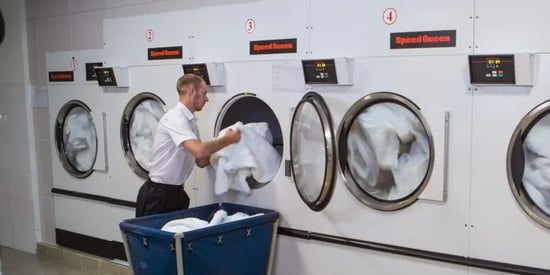There are two parts to running a successful commercial laundry system, whether you are a small local laundromat or a massive mining enterprise. Your laundry must clean clothes or linen (to whatever specific standard you require), and it must be cost-effective. As we like to say, despite the higher up-front cost, commercial laundry equipment provides a much lower ongoing cost than a household machine, but there are more steps you can take to make that return on investment even better!

#1 How many staff hours do you need?
One of the easiest ways to reduce your costs is to consider how many staff you need. There's little point in employing staff during hours when washing doesn't need to be done after all. For some businesses, like laundromats, you may also be able to almost eliminate the labour component of your business, save for cleaners.
For non-laundromats, you should consider exactly how much time is required to do all your laundry, and then employ staff accordingly. You can do this by calculating how many cycles are required for any given volume of laundry (hours, days, weeks...). Our local distributors are experts at advising on this.

#2 Consider your washer-to-dryer ratio
Ensuring you have an appropriate washer-to-dryer ratio is another excellent way to minimise costs, as well as improve the efficiency of your system. A washer-to-dryer ratio doesn't simply mean having an equal number of machines (although that does tend to help) but also involves ensuring you have the appropriate weight capacities of machines. You don't want to transfer 15kgs of wet washing into a 10kg dryer!
Being able to transfer loads on a 1:1 ratio will increase the speed at which you are able to clean laundry, as well as prevents the chance of overloading and the risks of causing expensive damage to your machines. It is also critical to minimising labour costs.

#3 Optimise your water and energy usage
Lastly, Speed Queen machines enable commercial laundry managers to improve their machine's resource use. Insights is a powerful tool that can be used by laundromat owners to analyse how efficiently machines are running, as well as to prevent leaks.
Want to learn more commercial laundry tips from our experts?

